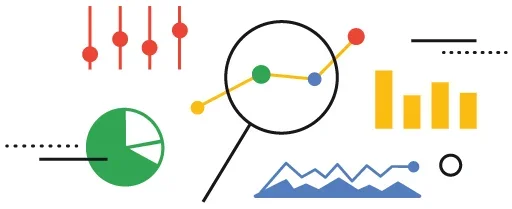- Oct 18, 2021
- 10 min read

Google Data Analytics Capstone Project
Updated: Jul 5, 2023
I worked on the Google Data Analytics Capstone Project, Track 1, Case Study 1. I will be diving into the background, my full process of cleaning, analyzing and visualizing the data, along with my final suggestions and summary of the data.
Quick Links :
Tableau Dashboard | Github R Code for Analysis | Github R Code for Tableau Visualization | LinkedIn Post
Below is a table of contents in case you want to go to a specific section.
Table of Contents:
Microsoft excel.
Finished Project
Summary of Data
Business Suggestions
What I Learned
Cyclistic is a bike sharing program which features more than 5,800 bikes and 600 docking stations. It offers reclining bikes, hand tricycles, and cargo bikes, making it more inclusive to people with disabilities and riders who can't use a standard two-wheeled bike. It was founded in 2016 and has grown tremendously into a fleet of bicycles that are geotracked and locked into a network of 692 stations across Chicago. The bikes can be unlocked from one station and returned to any other station in the system anytime.
Previously, Cyclistic's marketing strategy tried to build the general awareness and appeal to broad consumers. It has flexible pricing plans: single-ride passes, full-day passes, and annual memberships. Those who purchase single-ride or full-day passes are referred to as casual riders while those who purchase annual memberships are Cyclistic members .
My Role : In this scenario I am a junior data analyst at Cyclistic and my team has been tasked with the overall goal (see below) of designing marketing strategies
Overall Goal : Design marketing strategies aimed at converting casual riders into annual members.
Business Question : "How do annual members and casual riders use Cyclistic bikes differently?"
Below I will describe step-by-step the process I used to for this project. If you want to skip ahead to the business suggestions move onto the section "Insights".
Overview : I first analyzed the data separately (each month) in Excel, then used R to analyze the data as a whole (one year). Finally I created a dashboard in Tableau and used Figma to support the design elements.
I initially wanted to gather and analyze my data in Excel because it was the tool I was most familiar with and I could get a general understanding of the data quicker. I did not combine all of the spreadsheets into one because that would've taken more processing power than my computer had.
I began downloading the data from divvy-tripdata , and turning the .csv files into excel spreadsheets. I downloaded the most recent year of data which was at the time of starting my project:
August 2020
September 2020
October 2020
November 2020
December 2020
January 2021
February 2021
Added two columns to all of the months:
ride_length calculated the total ride length for each trip using the start_at column which was: ending time minus starting time.
day_of_week calculated the day of the week for each trip using the start_at column date.
Went over the business task and the information I had at hand and how that could be used to figure out how members and casual riders use the bike service differently
Came up with metrics to look at such as :
total number of rides per hour, per day of the month, per season, per day of the week, and for different bike types
Average ride length between members and casual
For every month in Excel created pivot tables and charts to go with the analysis on (this took the longest):
Total Rides per Weekday - calculated the total rides for members and casual and separated it by day of the week; used a cluster column chart
Average Ride Length - calculated the average ride length for members and casual and separated it by day of the week; used a cluster column chart
Total Rides per Hour - calculated the total rides for members and casual separated by the time of the day (24hr); used a line comparison chart
Total Rides per Day - calculated the total rides for members and casual separated by the day of the month; used a line comparison chart
Total Rides per Bike Type - calculated the total rides for members and casual separated by Bike type; used stacked column chart
I also created a Google docs Notes list where I wrote down the exact steps for each month (had a checklist) and included my insights for each month
Time Spent:
535 minutes or just under 9 hours to complete.
I originally wanted to use SQL but the files were too big to upload and I couldn't figure out how to utilize Google Cloud Platform. Instead I used R to analyze the data because it could handle all of the information quicker than Excel, and I wanted to work on my R skills. Below is my general process in R, I didn't include my mistakes/missteps or errors for the sake of brevity.
View my full code on my Github for this capstone project here .
Load all of the libraries I used: tidyverse, lubridate, hms, data.table
Uploaded all of the original data from the data source divytrip into R using read_csv function to upload all individual csv files and save them in separate data frames. For august 2020 data I saved it into aug08_df, september 2020 to sep09_df and so on.
Merged the 12 months of data together using rbind to create a one year view
Created a new data frame called cyclistic_date that would contain all of my new columns
Created new columns for:
Ride Length - did this by subtracting end_at time from start_at time
Day of the Week
Time - convert the time to HH:MM:SS format
Season - Spring, Summer, Winter or Fall
Time of Day - Night, Morning, Afternoon or Evening
Cleaned the data by:
Removing duplicate rows
Remove rows with NA values (blank rows)
Remove where ride_length is 0 or negative (ride_length should be a positive number)
Remove unnecessary columns: ride_id, start_station_id, end_station_id, start_lat, start_long, end_lat, end_lng
Calculated Total Rides for:
Total number of rides which was just the row count = 4,152,139
Member type - casual riders vs. annual members
Type of Bike - classic vs docked vs electric; separated by member type and total rides for each bike type
Hour - separated by member type and total rides for each hour in a day
Time of Day - separated by member type and total rides for each time of day (morning, afternoon, evening, night)
Day of the Week - separated by member type and total rides for each day of the week
Day of the Month - separated by member type and total rides for each day of the month
Month - separated by member type and total rides for each month
Season - separated by member type and total rides for each season (spring, summer, fall, winter)
Calculated Average Ride Length for:
Total average ride length
Type of Bike - separated by member type and average ride length for each bike type
Hour - separated by member type and average ride length for each hour in a day
Time of Day - separated by member type and average ride length for each time of day (morning, afternoon, evening, night)
Day of the Week - separated by member type and average ride length for each day of the week
Day of the Month - separated by member type and average ride length for each day of the month
Month - separated by member type and average ride length for each month
Season - separated by member type and average ride lengths for each season (spring, summer, fall, winter)
Then using all of this data I created my own summary in my case notes and took note of the: total rides for each variable, average ride lengths for each variable, and the difference between members versus casual riders. I originally wanted to create a report using R Markdown as well but for the sake of time (I had already spent over 20 hours on the project so far), I decided to skip this step, and write this article instead.
1045 minutes or about 17 and a half hours to complete.
While I learned the basics of Tableau in the Google Course I wanted more practice with visualizing data and creating dashboards.
To view my completed dashboard click here .
I created a separate R code (you can view it here on Github) that made some changes for specifically the Tableau portion.
For ride length I rounded the digits by 1, meaning my numbers were 29.8 or 12.5.
Revised how I created my "month" column. I used mutate() to create a column that had the month in ___ format and not number format. So instead of 01 it would say "January"
Cleaned the data: removed rows with NA values, removed duplicate rows, removed where ride_length was 0 or negative and removed unnecessary columns like: ride_id, start_station_id, end_station_id, start_lat, start_long, end_lat, end_lng
Created a new dataframe with this information so I could test the difference between the original data frame (cyclistic_date) that I used for my analysis and the data frame I would use for Tableau (cyclistic_tableau).
In this new data frame I removed more columns to make calculations quicker in Tableau. I removed: start_station_name, end_station_name, time, started_at, ended_at
Downloaded this data frame into a .csv file which I uploaded to Tableau
Created graphs similar to those I created in Excel but added a few:
Total Rides by Bike Type
Ride Length by Weekday
Total Rides by Weekday
Total rides by hour, total rides by month.
Then I created a basic dashboard with all of that information, a prototype for me to view while I was creating the final dashboard ( Figure 1 below).
Created a prototype mockup in Figma
Created a final version of the mockup in Figma
Edited Dashboard in Tableau to reflect design in Figma
Edited graphs in Tableau
Made bar graphs round
Added annotations
Highlights to specific important notes
Got rid of labels for visual purposes
Combined Figma and Tableau (used dashboard created in Figma as the background for my Tableau Dashboard) to create a final prototype ( Figure 2 below)
Made minor edits to design elements and created final dashboard ( Figure 3 - Cyclistic Dashboard V1 )
On April 24, 2023 I decided to update my dashboard (See Finished Project , image Final Dashboard - Cyclistic Dashboard V2 ). All of the analysis is the same. The only changes have been to the dashboard. Which include:
Adding horizontal grid lines to a few of the charts
Updating the tool tips.
Making all of the top metric values (e.g. Total Rides, Average Ride Length, etc.) interactive in Tableau instead of in Figma.
765 minutes or almost 13 hours to complete.
Tableau Prototype
Below was my first draft of the dashboard only using Tableau.

Prototype using Figma Background
Combined Figma and Tableau (used dashboard created in Figma as the background for my Tableau Dashboard) to create a final prototype.

Final Dashboard V1
Made minor edits to design elements and created final dashboard. This was the original final dashboard.

I am including the other tools I used.
Figma to create my background and help develop the dashboard aesthetics.
Google Docs helped me keep track of all of my documents for this project like:
Date Log - I wrote down what I did that day related to my project
Resources - A list of resources I frequently used
Case Notes - Notes for the case study including the final insights, what I was looking for, and anything else having to do with the case
Evernote to draft this article before I uploaded it here.
FINISHED PROJECT
Here is my finished project: Google Capstone Project (V2) . You can view the links to my R code on Github used for analysis here and the code for Tableau here .
Note: This is V2 with a few minor changes to the dashboard. Including:

SUMMARY OF DATA
Those who purchase single-ride or full-day passes are referred to as casual riders while those who purchase annual memberships are Cyclistic members .
Total Rides by User Type
Average Ride Length per User Type
Average Ride per Weekday
Members had more rides with 2,328,763 total rides or 56% and casual riders had 1,823,376 total rides or 43%.

Total Rides per Bike Type
Both casual riders and members used the classic bike the most with 1,777,593 rides or 43% of total rides, followed by docked bikes with 1,545,936 rides or 37% of total rides, and lastly with electric bikes at 828,610 rides or 20% of total rides.

Average Ride Length by User Type
The total average ride length was 24 minutes. For casual riders it was longer at 27 minutes while members was 14 minutes.

Average Ride Length per Weekday
For the average ride length per weekday both casual riders and members had an increase in the average ride length on the weekends. For both Sunday was the longest at 31 minutes.

Saturday was the most popular weekday combining casual riders and member rides with 784,239 rides or 19% of total rides. But for member rides only Wednesday was the most popular day with 356,060 rides, 5,407 rides more than Saturday.

5PM or 17:00 was the busiest hour for both members and casual riders with 426,685 rides or 10% of the total rides. Typically rides began increasing in the morning at 6AM and rose until 5PM then dropped afterwards. The afternoon was the busiest for both rider types with 1,905,797 rides or 45% of total rides. 4AM was the least popular hour.

July was the busiest month combining casual riders and member rides at 691,476 rides or 16% of total rides. While summer was the most popular season for both at 1,903,446 rides or 46% of total rides. Looking at just members August is actually the busiest month with 323,140 rides, 816 rides more than July. Winter is the least popular season and February is the least popular month.

Final Summary
The most popular bike among with riders was the classic.
Busiest time was afternoon and the peak time was at 5PM for both casual riders and members.
Busiest weekday was Saturday, casual riders used the service the most on the weekends.
Busiest season was Summer for both types of riders.
Most rides by User Type was members but casual riders weren't far behind.
The average ride length was 24 minutes but casual riders on average rode 23 minutes longer than members.
BUSINESS SUGGESTIONS
This was the hardest part for me for the whole project. I have never provided suggestions for a business nor worked in marketing. Any feedback here would be appreciated.
These are my suggestions for the marketing team to convert casual riders to annual members:
Personalize discounts and show perks in the membership program based on their preferences and riding habits.
Emphasize the benefits of memberships, including discounts during busy times of the year like during Summer, or on the weekends.
Have existing members to share their stories about how using Cyclistic's system has changed their life, to create a sense of community, offer a discount if they do so this will help encourage new riders to join the program.
WHAT I LEARNED
Below is what I learned/practiced from over 40 hours spent on this project:
Pivot Tables in Microsoft Excel
Practice using R for data analysis and cleaning specifically using the tidyverse package for data analysis
Graphs in Tableau, edited visual elements along with creating different charts and filters.
Design elements of an effective dashboard
Combining the design feature of Figma with the functionality of Tableau
R portion of my project I found Itamar's case study on Kaggle using R as well, a helpful resource.
Tableau portion I used Navneet Singh's Tableau Dashboard as inspiration.
- Data Analytics
- Portfolio Projects
Recent Posts
The Power of Collaborative Projects in Data Analytics
Deep Work Dashboard 2023
Behind the Scenes: Creating a SQL Course
Wow Kelly. This really is impressive. Glad to see you are really into this process. You have definitely found your niche!!
CYCLISTIC BIKE SHARE - CASE STUDY WITH R
Idris oluwatobi, published on september 20, 2022.
Bike Station
INTRODUCTION
This capstone project is the final project in my Google Data Analytics Professional Certificate Course. In this case study, I will be analyzing a public dataset for a fictional company called Cyclistic, provided by the course. Here, I will be using R programming language for this analysis because of its potential benefits to reproducibility, transparency, easy statistical analysis tools and data visualizations.
The following sets of data analysis process will be followed:
The case study road map as listed below will be followed on each step
Codes, when needed.
Deliverables.
You are a junior data analyst working in the marketing analyst team at Cyclistic, a bike-share company in Chicago. The director of marketing believes the company’s future success depends on maximizing the number of annual memberships. Therefore, your team wants to understand how casual riders and annual members use Cyclistic bikes differently. From these insights, your team will design a new marketing strategy to convert casual riders into annual members.But first, Cyclistic executives must approve your recommendations, so they must be backed up with compelling data insights and professional data.
- Three questions will guide the future marketing program:
How do annual members and casual riders use Cyclistic bikes differently?
Why would casual riders buy Cyclistic annual memberships?
How can Cyclistic use digital media to influence casual riders to become members?
Lily Moreno (director of marketing and my manager) has assigned me the first question to answer: How do annual members and casual riders use Cyclistic bikes differently?
- Identify the business task
- The main business obejective is to design marketing strategies aimed at converting casual riders into annual members by understanding how they differ.
- Consider key stakeholders
- The key stakeholders are the Director of Marketing (Lily Moreno), Marketing Analytics team, and Executive team.
Deliverable
- A clear statement of the business task
- To find the differences between the casual riders and annual members.
- I will use Cyclistic’s historical trip data to analyze and identify trends.The data has been made available by Motivate International Inc. under this license . Datasets are available here link .
- Download data and store it appropriately.
- Data has been downloaded and copies have been stored securely on my computer.
- Identify how it’s organized.
- The data is in CSV (comma-separated values) format, and there are a total of 13 columns.
- Sort and filter the data.
- For this analysis, I will be using data for the year 2019 and 2020.
- Determine the credibility of the data.
- For the purposes of this case study, the datasets are appropriate and will enable me to answer the business questions. The data has been made available by Motivate International Inc. This is public data that I can use to explore how different customer types are using Cyclistic bikes. But data-privacy issues will prohibit me from using rider’s personally identifiable information and this will prevent me from determining if riders have purchased multiple single passes. All ride ids are unique.
- A description of all data sources used
- The main source of all the data used was provided by the Cyclistic Company .
Install and load required packages
Import data to R Studio
- Importing data for 2019
- Importing data for 2020
Wrangle and merge all data into a single file
- I made sure all the data sets have the same number of columns and also the name of each columns are the same before merging it all together
Cleaning up data and adding data to prepare for analysis
Check the data for errors.
Choose your tools.
Transform the data so you can work with it effectively.
Document the cleaning process.
Deliverables
- Documentation of any cleaning or manipulation of data.
- I inspected the new table that has been created using the following code chunks
Adding columns that list the date, month, day, and year of each ride.
- This will allow us to aggregate ride data for each month, day, or year. Therefore, the code chunks used are as follows
Adding a “ride_length” calculation to all_trips (in seconds)
Convert “ride_length” from factor to numeric so we can run calculations on the data
Remove “bad” data
- The dataframe includes a few hundred entries when bikes were taken out of docks and checked for quality by Divvy or ride_length was negative or Zero, so I created a new version of the dataframe (v2) since data is being removed
- All the data have been strored appropriately and has been prepared for analysis, so they are ready for exploration.
- Aggregate your data so it’s useful and accessible.
- Organize and format your data.
- Perform calculations.
- Identify trends and relationships.
- A summary of your analysis
Conduct descriptive analysis - Descriptive analysis on ride_length (all figures in seconds)
mean median max min of all_trips
Let’s visualize members and casuals by the total ride taken (ride count)
U.S. News & World Report Education takes an unbiased approach to our recommendations. When you use our links to buy products, we may earn a commission but that in no way affects our editorial independence.

Google Data Analytics Capstone: Complete a Case Study
About this course.
This course is the eighth course in the Google Data Analytics Certificate. You’ll have the opportunity to complete an optional case study, which will help prepare you for the data analytics job hunt. Case studies are commonly used by employers to assess analytical skills. For your case study, you’ll choose an analytics-based scenario. You’ll then ask questions, prepare, process, analyze, visualize and act on the data from the scenario. You’ll also learn other useful job hunt skills through videos with common interview questions and responses, helpful materials to build a portfolio online, and more. Current Google data analysts will continue to instruct and provide you with hands-on ways to accomplish common data analyst tasks with the best tools and resources. Learners who complete this certificate program will be equipped to apply for introductory-level jobs as data analysts. No previous experience is necessary. By the end of this course, you will: - Learn the benefits and uses of case studies and portfolios in the job search. - Explore real world job interview scenarios and common interview questions. - Discover how case studies can be a part of the job interview process. - Examine and consider different case study scenarios. - Have the chance to complete your own case study for your portfolio.
Add a Verified Certificate for $49 USD
What Else Should I Know?
Navigation Menu
Search code, repositories, users, issues, pull requests..., provide feedback.
We read every piece of feedback, and take your input very seriously.
Saved searches
Use saved searches to filter your results more quickly.
To see all available qualifiers, see our documentation .
- Notifications
This report is a comprehensive documentation of my work on the case study, which is the culmination of the Google Data Analytics certification program on Coursera.
kacaatko/Google-Data-Analytics-Certificate-Case-Study
Folders and files, repository files navigation, case study - bike sharing, google data analytics certification program on coursera - capstone project.
This repository contains code for "Capstone Project - Case Study 1" done as part of Coursera Google Data Analytics Professional Certificate.
Executive Summary of Case Study
The Case Study packet is here
The data source is stored on the only website with original data from bike sharing company from Chicago.
The Cyclistic bike-share analysis is ahead to answer a question:
How do annual members and casual riders use Cyclistic bikes differently?
- Full report of Case Study
- Full R code
- Presentation in Google Slides
- Tableau Dashboard
- visualizations on GitHub
Whether you’re just getting started or want to take the next step in the high-growth field of data analytics, professional certificates from Google can help you gain in-demand skills like R programming, SQL, Python, Tableau and more.

- 100% remote, online learning
- Hands-on, practice-based training
- Under 10 hours of study a week*

Get a job in data analytics, with help from Google
Learn the foundations of data analytics, and get the job-ready skills you need to kick-start your career in a fast-growing field.
Median salary in the Data Analytics field 1
In-demand job openings in data analytics 1
Qualify for in-demand jobs in data analytics
Data analysts prepare, process, and analyze data to help inform business decisions. They create visualizations to share their findings with stakeholders and provide recommendations driven by data.
- Data analyst
- Junior data analyst
- Associate data analyst
- Operations analyst
- Business systems analyst

Rachel L., certificate learner

Norge Pena Perez, Bachelors Instructor, Data Analytics at Miami Dade College

Kevin Hartman, Director of Analytics at Google

As a mom of two, and eager to grow her career, Promise completed the Google Data Analytics Certificate in a way that worked for her.

Learn more about the certificate program
Data analytics certificate.
Hosted on Coursera, this fully online program provides all the skills you need to find an entry-level job in the field of data analytics.
You’ll learn about:
- Data types and structures
- Using data to solve problems
- How to analyze data
- Data storytelling with visualizations
- Using R programming to supercharge your analysis
Certificate curriculum:
- Foundations: Data, Data, Everywhere
- Ask Questions to Make Data-Driven Decisions
- Prepare Data For Exploration
- Process Data from Dirty to Clean
- Analyze Data to Answer Questions
- Share Data Through the Art of Visualization
- Data Analysis with R Programming
- Data Analytics Capstone Project: Complete a Case Study
More details
Close details, preview the certificate material.

An introduction to data analytics
In this program, you’ll be introduced to the world of data analytics through hands-on curriculum developed by Google. You'll develop in-demand data analytics skills using spreadsheets, SQL, Tableau, R, and more. This will help equip you with the skills you need to apply for entry-level data analyst roles.
The full certificate program includes:
- Hands-on activities
- Quizzes and assignments
- Regular assessments
Get on the fast track to in-demand jobs with top employers
Complete a Google Career Certificate to get exclusive access to Talent Match , which offers free 1-on-1 coaching, interview and career support, and a job board to connect directly with employers, including over 20 companies in Google Career Certifcates Employer Consortium.

CONNECT WITH TOP EMPLOYERS, INCLUDING THESE:
Become a participating employer to connect with skilled candidates and grow your talent pipeline by completing the interest form . It is easy and free.

MORE OPPORTUNITIES FOR EVERYONE
Education and technology are keys to opportunity, but so are equity and access.
To support access to the Google Career Certificates, we’ve provided a Google.org grant to NPower Canada to deliver Google Career Certificate programs and deploy 5,000 scholarships.
These scholarships are distributed through NPower Canada, in collaboration with youth and workforce development non-profits like AIM CROIT, Indspire, Maison de l’amitié, Pathways to Education, Toronto Public Library, and the YMCA, focusing on Canadians from underserved communities.
Since 2021, NPower Canada has guided scholarship recipients through the program, providing ongoing wraparound support and the skills needed to be job-ready upon completion. Apply for a scholarship here .
Advanced Google Career Certificates
Advanced google career certificates build on the skills from our foundational certificates and provide continued learning opportunities for graduates to go deeper in the field., advanced data analytics certificate.
Advanced data analysts and data scientists are responsible for collecting, analyzing, and interpreting extremely large amounts of data.
Prepare for jobs such as:
- Senior data analyst
- Junior data scientist
- Data science analyst
Tools included:
Jupyter Notebook, Python, Tableau
- Regression analysis
- Translating data
- Machine learning
Business Intelligence Certificate
Business intelligence professionals help organizations collect, structure, interpret, and report on business data to help stakeholders make informed decisions.
- Business intelligence analyst
- Business intelligence engineer
- Business intelligence developer
BigQuery, Tableau, SQL
- Business intelligence analysis
- Data modeling
- ETL process
- Dashboards and reporting
- Engaging with stakeholders about data findings

“I really enjoyed the certificate content because it helped to reinforce the foundational knowledge I gained from the Google Data Analytics Certificate, going deeper into the topics I enjoyed like data visualization and communicating with stakeholders, while also introducing new tools and processes. I also found the activities challenging, which allowed me to critically think through the solutions and provide my unique perspective.”
Latoya B., Business Intelligence Certificate

“The certificate built on the skills from the Google Data Analytics Certificate, solidifying those foundations while introducing new concepts and tools to differentiate data analytics from business intelligence. I felt fully immersed into the world of Business Intelligence and look forward to taking the next step in my career.”
Kwame O., Business Intelligence Certificate

“The instructional videos in the Google Advanced Data Analytics Certificate were well-paced and easy to follow. I really enjoyed the instructors, particularly Cassie; her optimism towards data is infectious. She did a great job explaining the roles of different data professionals, especially in differentiating data analysts, data scientists, and business intelligence analysts. She helped me see the breadth of data-related careers.”
Johanna G., Advanced Data Analytics Certificate

“I found the Google Advanced Data Analytics Certificate very engaging and I loved going deep and learning more about the field. This program gave me the confidence that I really know what I am doing in the data analytics field, and now I feel motivated to apply for more data analytics roles.”
Carlos M., Advanced Data Analytics Certificate
Need more foundational skills? Check out the Data Analytics Certificate .
Frequently asked questions
What is data analytics.
Data is a group of facts that can take many different forms, such as numbers, pictures, words, videos, observations, and more. We use and create data everyday, like when we stream a show or song or post on social media.
Data analytics is the collection, transformation, and organization of these facts to draw conclusions, make predictions, and drive informed decision-making.
Why start a career in data analytics?
Companies must continually adjust their products, services, tools, and business strategies to meet consumer preferences and demand and to react to emerging trends. Because of this, data analyst roles are in demand and competitively paid.
Data analysts make sense of data and numbers to help organizations make better business decisions. They prepare, process, analyze, and visualize data, discovering patterns and trends and answering key questions along the way. Their work empowers their wider team to make better business decisions.
Who is this program for?
You! No prior experience or specific tool is required. All you need is high-school-level math and a curiosity about how things work.
Why enroll in the Google Data Analytics Certificate?
You will learn the skill set required for becoming a junior or associate data analyst in the Google Data Analytics Certificate. Data analysts know how to ask the right question; prepare, process, and analyse data for key insights; effectively share their findings with stakeholders; and provide data-driven recommendations for thoughtful action.
You’ll learn these job-ready skills in our certificate program through interactive content (discussion prompts, quizzes, and activities) in under six months, with under 10 hours of flexible study a week.* Along the way, you'll work through a curriculum designed with input from top employers and industry leaders, like Tableau, Accenture, and Deloitte. You’ll even have the opportunity to complete a case study that you can share with potential employers to showcase your new skill set.
After you’ve graduated from the program, you’ll have access to career resources and be connected directly with employers hiring for open entry-level roles in data analytics.
What tools or platforms are included in the curriculum?
You'll learn to use analysis tools and platforms such as spreadsheets (Google Sheets or Microsoft Excel), SQL, presentation tools (Powerpoint or Google Slides), Tableau, RStudio, and Kaggle.
Will you be teaching R or Python?
This program teaches the open-source programming language, R. R is a great starting point for foundational data analysis, and offers helpful packages for beginners to apply to their projects. We do not cover Python in the curriculum but encourage learners to explore Python after completion if they'd like to continue their learning journey.
What language is the certificate available in?
This certificate is currently available in English and we are currently working to bring this certificate in additional languages. Please check back here for updates.
How much are the Data Analytics Certificates?
Google Career Certificates cost US$49 per month on Coursera after an initial 7-day free trial period. All Google Career Certificates are completely self-paced. At about 10 hours of study per week, many learners complete a Google Career Certificate in three to six months.
What is Coursera?
Coursera is a global online learning platform that offers access to online courses. Google has worked with Coursera to make Google Career Certificates available on their platform.
Where can I access Google Career Certificates?
Google Career Certificates are available globally in English on Coursera. The Google IT Support Certificate and the Google Project Management Certificate are also available in French, Spanish and Portuguese. We are working to make the certificates available in more languages.
How do I apply for financial assistance?
If you are interested in financial assistance for Google Career Certificates, you may be eligible for financial aid via Coursera through the course page. Recipients of financial aid will have full access to course content and assignments required to earn a certificate. To apply, go to the certificate course page on Coursera and click the “Financial aid available” link next to the “Enroll” button.
Google has also funded 5,000 scholarships for Google Career Certificates, which will be distributed by Google.org grantee NPower Canada. These funds will create a lasting impact in helping people land high-quality jobs in high-growth fields. Apply for a scholarship here .
What is the Google Career Certificates Employer Consortium? How does it work?
The Google Career Certificates Employer Consortium consists of different companies like Deloitte, KPMG, Loblaw, Mosaic, Omnicom Media Group, Publicis Groupe, Shopify, TELUS, Unilever, and of course, Google. These companies span multiple sectors and are committed to considering Google Career Certificate graduates for jobs. Upon completion of a Google Career Certificate, you will gain access to an exclusive job platform where you can easily apply to opportunities from employers with open jobs.
Employers interested in joining the Google Career Certificates Employer Consortium can find more information at grow.google/employers .
What other kind of support is available after I complete a Google Career Certificate?
In addition to expert training and hands-on projects designed to prepare you for a job in your field of choice, you'll get access to a resume building tool, mock interviews and career networking support designed to help you with your job search. You'll also be able to connect with Canadian employers in the hiring consortium who are accepting candidates who have completed a Google Career Certificate.
Who designed the Google Career Certificates?
Google Career Certificates were designed and built by subject-matter experts and senior practitioners at Google from each of the job fields. Every certificate has been created to equip learners with theoretical and practical knowledge and real-life problem-solving skills to be successful in an entry-level job. Expert industry organizations and platforms - like the Project Management Institute for project management, Tableau for data analytics, and Figma for UX design, to name a few - consulted and collaborated on material.

Assignments & Deadlines (Archived) — User16341994874798769056 asked a question.
I've read that there is an optional case study, do I need to do the case study to get the certificate?
- Assignments & Deadlines
Vasavi L - Community Guide ⭐️
Hi @User16341994874798769056
If it is optional means it's not mandatory to finish it. It's Graded assessment means you need to do to get the certificate. But it's optional so you can ignore them. It's upto you.
Hope this helps you.
Best of luck!
Related Questions
© 2021 Coursera Inc. All rights reserved.

IMAGES
COMMENTS
There are 4 modules in this course. This course is the eighth and final course in the Google Data Analytics Certificate. You'll have the opportunity to complete a case study, which will help prepare you for your data analytics job hunt. Case studies are commonly used by employers to assess analytical skills. For your case study, you'll ...
I worked on the Google Data Analytics Capstone Project, Track 1, Case Study 1. I will be diving into the background, my full process of cleaning, analyzing and visualizing the data, along with my final suggestions and summary of the data. Below is a table of contents in case you want to go to a specific section.
This repository contains my three case studies for the Google Data Analytics Professional Certificate Capstone Project. :chart_with_upwards_trend::bar_chart::chart_with_downwards_trend: - marcoshsq/GoogleDataAnalyticsCapstone
Introduction. For the past few months, I have been completing the Google Data Analytics Professional Certificate offered on Coursera.I have been learning about the six stages of the data analysis ...
This capstone project is the final project in my Google Data Analytics Professional Certificate Course. In this case study, I will be analyzing a public dataset for a fictional company called Cyclistic, provided by the course. Here, I will be using R programming language for this analysis because of its potential benefits to reproducibility ...
Below is my walkthrough of Case Study 1 within the course using various tools and methods. Scenario: You are a data analyst working at Cyclistic, a bike-share company in Chicago. Cyclistic allows ...
In this program, you'll be introduced to the world of data analytics through hands-on curriculum developed by Google. You'll develop in-demand data analytics skills using spreadsheets, SQL, Tableau, R, and more. This will help equip you with the skills you need to apply for entry-level data analyst roles. The full certificate program includes ...
In this video I discuss my case study for the Google Data Analytics Certificate.You can enroll in the program here: https://grow.google/dataanalytics/#?modal...
Interested in a career in Analytics? Take the first module of my Analytics Career Access program - Analyst Career Foundations - for FREE! Sign up today at ww...
The Google Data Analytics Professional Certificate is professional training designed by Google that prepares you to become a junior data analyst, a database administrator, and many other positions. ... The final course in the program begins with teaching you the benefits of case studies and portfolios for your job search and goes over job ...
This case study represents course 8 "Capstone project" of the Google Data Analytics Professional Certificate on Coursera. The Scenario: Cyclistic is a fictional bike-share company in Chicago ...
INTRODUCTION. This capstone is part of the eighth and final course from the Google Data Analytics Professional Certificate, where you have the opportunity to complete an optional case study. In this project, we will apply the five steps of the data analysis process taught in the program: Ask, Prepare, Process, Analyze, Share, and Act.
Google Data Analytics: Case Study 1 (using RStudio) Hello! Over the course of a month, I've been working on completing the Google Data Analytics Professional Certificate on Coursera. While it was ...
This course is the eighth course in the Google Data Analytics Certificate. You'll have the opportunity to complete an optional case study, which will help prepare you for the data analytics job hunt. Case studies are commonly used by employers to assess analytical skills. For your case study, you'll choose an analytics-based scenario.
About this Course. This course is the eighth course in the Google Data Analytics Certificate. You'll have the opportunity to complete an optional case study, which will help prepare you for the ...
Case Study - Bike Sharing Google Data Analytics Certification Program on Coursera - Capstone Project. This repository contains code for "Capstone Project - Case Study 1" done as part of Coursera Google Data Analytics Professional Certificate.
If the issue persists, it's likely a problem on our side. Unexpected token < in JSON at position 4. keyboard_arrow_up. content_copy. SyntaxError: Unexpected token < in JSON at position 4. Refresh. Explore and run machine learning code with Kaggle Notebooks | Using data from Cyclistic.
Whether you're just getting started or want to take the next step in the high-growth field of data analytics, professional certificates from Google can help you gain in-demand skills like R programming, SQL, Python, Tableau and more. Get Started on. 100% remote, online learning. Hands-on, practice-based training. Under 10 hours of study a week*.
Hey there guys, So, I've been following these Google Data Analytics courses on Coursera and I have reached the last one where I am asked to complete a Case Study so I can get my certificate. It is worth mentioning that I have no prior experience, thus I feel kinda lost. I have been introduced to R, SQL, Tableau, and Google Sheets.
Does "Google Data Analytics Professional Certificate" have a case study? I've read that there is an optional case study, do I need to do the case study to get the certificate? Assignments & Deadlines. Liked. Like. Answer. Share. 1 answer. 1.16K views.
Join us at 6 PM (WAT) this Thursday May 9, 2024, as our distinguish guest will be discussing the topic: GEN-Z ACCOUNTANTS: Redefining Traditional...